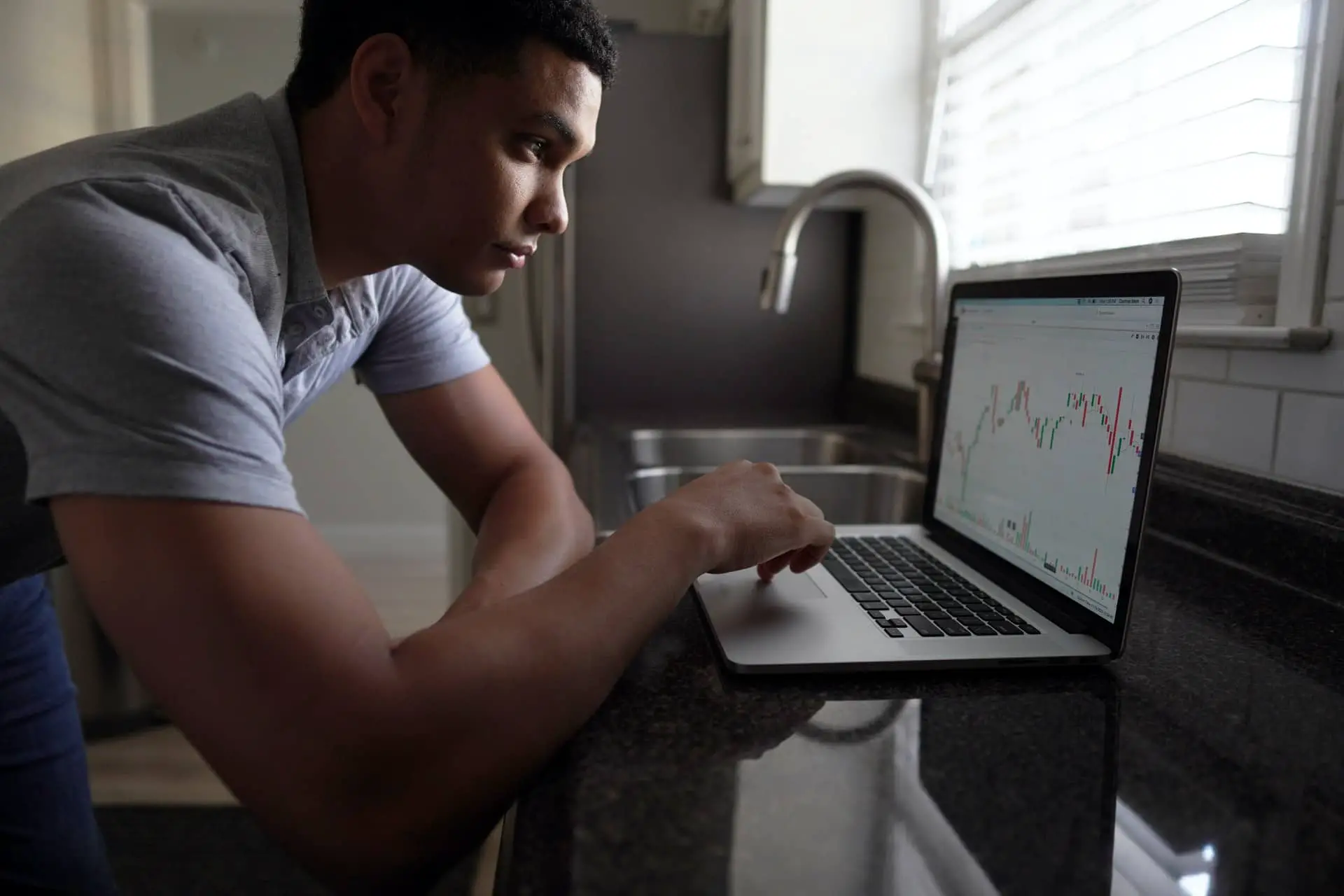Introduction
Trading in the stock market has traditionally been limited to regular market hours, typically from 9:30 am to 4:00 pm Eastern Time. However, with the advancement of technology and the globalization of financial markets, investors now have the opportunity to trade outside of these regular hours. This extended trading window is known as after-hours trading.
After-hours trading refers to the period of time after the stock market closes and before it opens again the next day. During this time, investors can buy and sell securities on electronic communication networks (ECNs) or through electronic exchanges. One popular brokerage firm that offers after-hours trading is Fidelity.
Enabling after-hours trading at Fidelity can provide investors with several advantages. It allows for greater flexibility in managing their investment portfolios, as they can react to news and events that occur outside of regular market hours. It also gives them the opportunity to take advantage of any price fluctuations that may occur due to after-hour news releases or earnings announcements.
However, to start trading after hours at Fidelity, there are certain requirements and steps that need to be followed. This guide will provide a step-by-step overview of how to enable after-hours trading at Fidelity, as well as highlight the benefits and contact information for obtaining support if needed.
Overview of After Hours Trading
After hours trading is a period in which investors can buy and sell stocks outside of the regular trading hours set by the stock exchanges. While the exact hours may vary slightly depending on the brokerage and the exchange, after hours trading typically begins after the regular market closes in the afternoon and continues until the pre-market session begins the next morning.
During after hours trading, investors have the opportunity to react to news and events that occur outside of regular trading hours, such as earnings releases, economic reports, and geopolitical developments. This can be particularly advantageous for active traders and investors looking to capitalize on market-moving events.
After hours trading is conducted through electronic communication networks (ECNs) or electronic exchanges. These trading platforms match buyers and sellers of stocks, allowing for the execution of trades outside of regular market hours. However, it’s important to note that after hours trading generally has lower liquidity compared to regular trading hours, which can result in wider spreads and increased price volatility.
While after hours trading can offer opportunities for investors, it is important to be aware of the risks involved. Due to the reduced trading volume and potential price fluctuations, the bid-ask spreads can be wider, and it may be more difficult to execute trades at desired prices. Additionally, news releases and events that occur after hours can cause substantial price movements, making it crucial for investors to stay updated and make informed decisions.
It’s worth noting that not all stocks are available for after hours trading. Some stocks may have limited or no trading activity outside of regular market hours. Additionally, certain order types, such as stop-loss orders or trailing stop orders, may not be available during after hours trading. Therefore, it’s important for investors to understand the specific trading rules and limitations associated with after hours trading.
Overall, after hours trading provides investors with extended access to the market and the opportunity to react to news and events outside of regular market hours. However, it is essential to carefully consider the risks and limitations associated with after hours trading before engaging in it.
Benefits of After Hours Trading
After hours trading offers several benefits for investors who are looking to take advantage of extended market access and react to news and events outside of regular trading hours. Here are some key benefits:
- Flexibility: After hours trading provides investors with the flexibility to manage their portfolios and execute trades outside of regular market hours. This can be particularly advantageous for individuals with busy schedules or those who prefer to actively manage their investments.
- React to news and events: After hours trading allows investors to react to news releases and events that occur outside of regular trading hours. This can be crucial for taking advantage of market-moving information, such as earnings announcements, economic reports, or geopolitical developments.
- Access to global markets: After hours trading enables investors to trade stocks listed on international exchanges that operate in different time zones. This access can provide opportunities to invest in global companies and diversify portfolios beyond domestic markets.
- Potential for price movements: After hours trading can be characterized by increased price volatility and wider bid-ask spreads. This volatility may present trading opportunities for investors looking to capitalize on short-term price movements.
- Convenience: Investors who prefer to adjust their positions or manage their portfolios outside of regular market hours can find after hours trading to be more convenient. It allows them to stay engaged with the markets at their own pace and on their own schedule.
While these benefits offer advantages for investors, it’s important to keep in mind that after hours trading also comes with certain risks and limitations. The reduced liquidity and increased volatility during this time can impact trade execution and pricing. It is crucial for investors to carefully consider their risk tolerance and market conditions before actively participating in after hours trading.
Requirements for After Hours Trading at Fidelity
If you are interested in engaging in after hours trading at Fidelity, there are certain requirements that need to be met. Here are the key requirements to enable after hours trading:
- Account type: You must have an eligible brokerage account with Fidelity. This can be an individual brokerage account, joint account, IRA (Individual Retirement Account), or another account type offered by Fidelity.
- Approval: Depending on your account type, you may need to get approval for after hours trading. Typically, individual and joint brokerage accounts do not require additional approval, but other types of accounts, such as IRAs, may have specific eligibility criteria.
- Trading platform: You need to have access to Fidelity’s trading platform that supports afterhours trading. Fidelity offers a variety of trading platforms, including their website and mobile app, which allow you to trade stocks and other securities outside of regular market hours.
- Understanding the rules: It is important to familiarize yourself with the rules and limitations associated with after hours trading. Fidelity may have specific guidelines regarding order types, order durations, and the availability of certain stocks during after hours trading. Be sure to review their trading policies and guidelines to ensure compliance.
- Sufficient funds: You need to have sufficient funds in your brokerage account to cover any trades placed during after hours trading. It is important to maintain a suitable cash balance or have margin trading capabilities if you plan to trade on margin.
It’s worth noting that while Fidelity offers after hours trading, not all securities may be available for trading during this time. Some stocks or other securities may have limited liquidity, resulting in wider bid-ask spreads and potentially impacting trade execution. Therefore, it is recommended to check the availability of specific stocks or securities before placing trades during after hours trading.
By meeting these requirements and understanding the rules, you can enable after hours trading and take advantage of the extended trading window offered by Fidelity.
Step-by-Step Guide to Enable After Hours Trading at Fidelity
If you meet the requirements mentioned earlier and are ready to enable after hours trading at Fidelity, follow these step-by-step instructions:
- Open a Fidelity brokerage account: If you don’t already have an account with Fidelity, visit their website and follow the process to open a brokerage account. Provide the necessary information and complete any required documentation.
- Fund your account: Once your account is opened, deposit funds into your brokerage account. This can be done through a bank transfer, wire transfer, or by mailing a check to Fidelity.
- Download the Fidelity trading platform: If you haven’t done so already, download and install the Fidelity trading platform. You can access the platform through their website or mobile app, depending on your preferred method of trading.
- Log in to your Fidelity account: Launch the Fidelity trading platform and log in using your Fidelity account credentials.
- Verify your account: If prompted, complete any necessary verification steps to verify your identity and account information.
- Review after hours trading policies: Familiarize yourself with Fidelity’s after hours trading policies, including the available order types, order durations, and any limitations on specific stocks or securities during after hours trading.
- Ensure sufficient funds: Confirm that your account has sufficient funds to cover any potential trades you plan to execute during after hours trading.
- Place after hours trades: With your account funded and the platform open, you can now place trades during after hours trading. Use the trading interface to search for specific stocks, enter the desired trade details, and confirm the order. Make sure to review the order summary before submitting the trade.
- Monitor your trades: Keep an eye on the status of your trades during after hours trading. You can track the execution of your orders and monitor any price movements that may occur.
- Review your after hours trading activity: After the after hours trading session is complete, review your trading activity, including any executed trades and positions taken during that time.
By following these steps, you can successfully enable after hours trading at Fidelity and start taking advantage of the extended trading opportunities provided by their platform.
Contacting Fidelity Support for Assistance
If you encounter any issues or have any questions regarding after hours trading at Fidelity, their customer support team is available to assist you. Fidelity provides various channels through which you can reach out for support:
- Phone support: Fidelity provides a dedicated phone support line for their customers. You can call their customer service number, which can be found on their website or your account documentation, to speak with a representative who can assist you with any inquiries or concerns related to after hours trading.
- Online chat: Fidelity also offers an online chat feature on their website. Simply navigate to their support page and look for the chat option, where you can engage in a live chat session with a support representative who can help address your after hours trading questions.
- Email support: If you prefer to communicate via email, you can reach out to Fidelity’s customer support team by sending an email to their designated support address. Include your account details and a clear description of your question or issue related to after hours trading.
- Local branch visits: Fidelity has physical branch locations in various cities across the United States. If you prefer face-to-face assistance, you can visit a nearby branch and speak with a representative in person. Check Fidelity’s website for the locations and operating hours of their branches.
When contacting Fidelity support, it is recommended to have your account information readily available, including your account number and any relevant trade details or error messages you may have encountered during after hours trading. This will help the support team assist you more efficiently.
It’s important to note that Fidelity’s customer support hours may vary, so be sure to check their website or account documentation for their current availability. They are typically available during regular business hours, but they may also offer support outside of these hours for urgent matters.
Remember, the support team at Fidelity is there to assist you with any after hours trading queries or concerns you may have. Don’t hesitate to reach out to them for guidance or clarification as needed.
Conclusion
After hours trading at Fidelity provides investors with the opportunity to engage in trading outside of regular market hours, allowing for greater flexibility and the ability to react to news and events. By meeting the requirements, such as having an eligible account and accessing the appropriate trading platform, investors can enable after hours trading at Fidelity.
During after hours trading, it is important to understand the risks and limitations associated with lower liquidity and increased price volatility. However, the benefits of after hours trading, including flexibility, access to global markets, and the potential for price movements, can make it an appealing option for investors seeking extended market access.
This article has provided an overview of after hours trading, discussed the benefits it offers, outlined the requirements and steps to enable after hours trading at Fidelity, and highlighted the available support options for any assistance needed. By following the step-by-step guide and contacting Fidelity’s support team when necessary, investors can navigate the after hours trading process with confidence.
Remember to conduct thorough research, stay informed about the specific rules and limitations associated with after hours trading at Fidelity, and consider your risk tolerance before actively participating in after hours trading. With proper preparation and understanding, after hours trading can be an additional tool in your investment strategy.

























